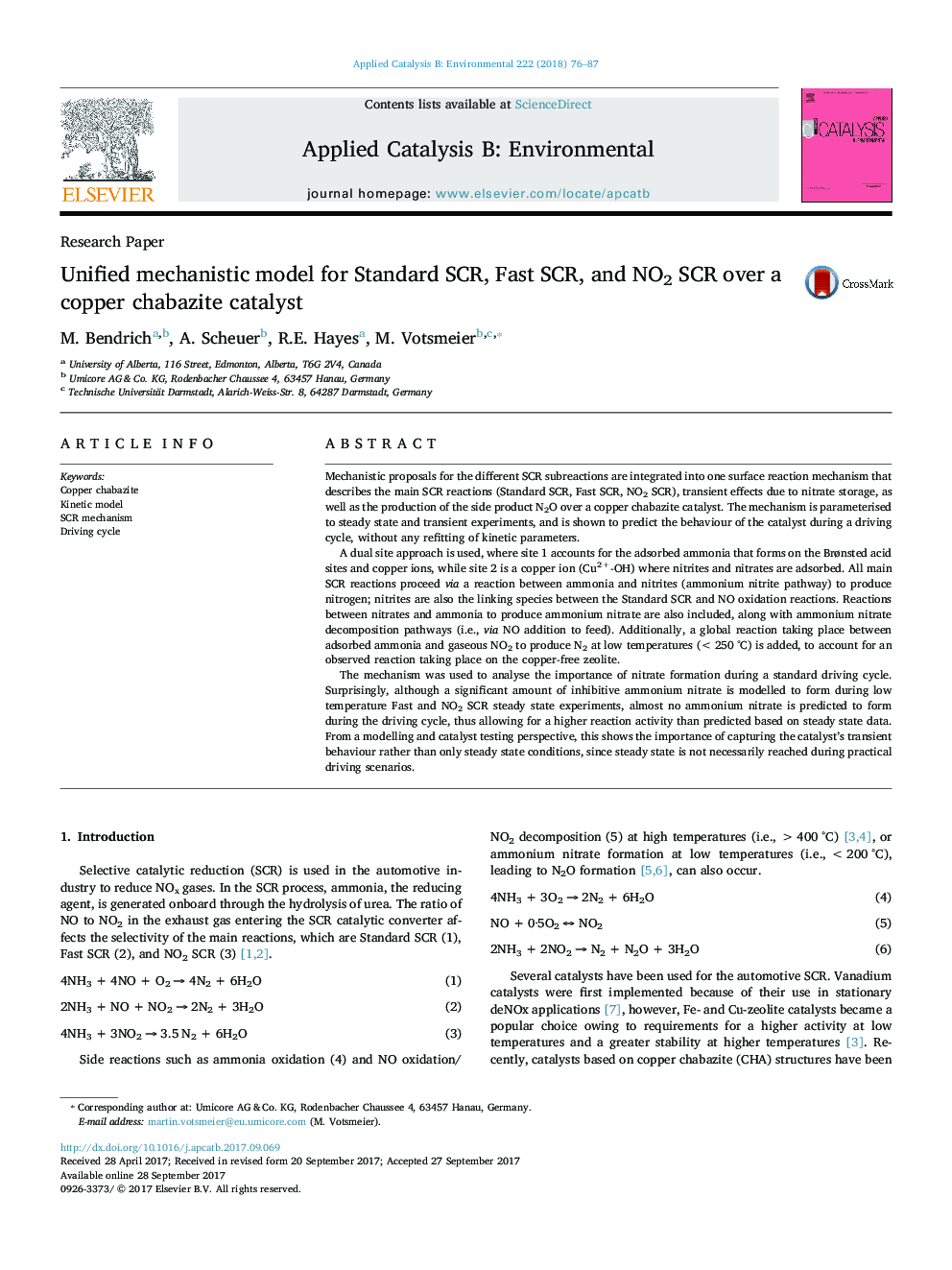| کد مقاله | کد نشریه | سال انتشار | مقاله انگلیسی | نسخه تمام متن |
|---|---|---|---|---|
| 6453354 | 1418798 | 2018 | 12 صفحه PDF | دانلود رایگان |

- Dual site, mechanistic SCR model for Standard, Fast, and NO2 SCR conditions.
- Standard SCR and NO oxidation mechanism linked via nitrites.
- Ammonium nitrate formation, inhibition, and decomposition included.
- Kinetic parameters fit to experiments and predict transient driving cycle behaviour.
- Importance of capturing catalyst transients, rather than only steady state, shown.
Mechanistic proposals for the different SCR subreactions are integrated into one surface reaction mechanism that describes the main SCR reactions (Standard SCR, Fast SCR, NO2 SCR), transient effects due to nitrate storage, as well as the production of the side product N2O over a copper chabazite catalyst. The mechanism is parameterised to steady state and transient experiments, and is shown to predict the behaviour of the catalyst during a driving cycle, without any refitting of kinetic parameters.A dual site approach is used, where site 1 accounts for the adsorbed ammonia that forms on the Brønsted acid sites and copper ions, while site 2 is a copper ion (Cu2+-OH) where nitrites and nitrates are adsorbed. All main SCR reactions proceed via a reaction between ammonia and nitrites (ammonium nitrite pathway) to produce nitrogen; nitrites are also the linking species between the Standard SCR and NO oxidation reactions. Reactions between nitrates and ammonia to produce ammonium nitrate are also included, along with ammonium nitrate decomposition pathways (i.e., via NO addition to feed). Additionally, a global reaction taking place between adsorbed ammonia and gaseous NO2 to produce N2 at low temperatures (< 250 °C) is added, to account for an observed reaction taking place on the copper-free zeolite.The mechanism was used to analyse the importance of nitrate formation during a standard driving cycle. Surprisingly, although a significant amount of inhibitive ammonium nitrate is modelled to form during low temperature Fast and NO2 SCR steady state experiments, almost no ammonium nitrate is predicted to form during the driving cycle, thus allowing for a higher reaction activity than predicted based on steady state data. From a modelling and catalyst testing perspective, this shows the importance of capturing the catalyst's transient behaviour rather than only steady state conditions, since steady state is not necessarily reached during practical driving scenarios.
158
Journal: Applied Catalysis B: Environmental - Volume 222, March 2018, Pages 76-87